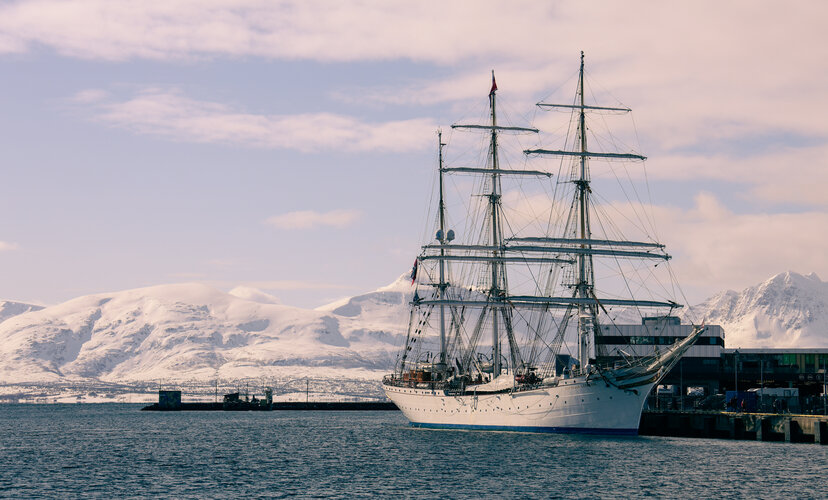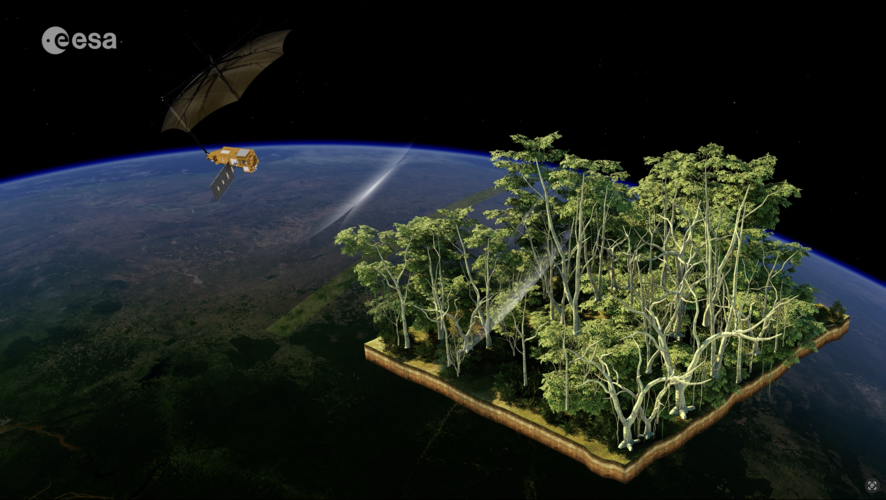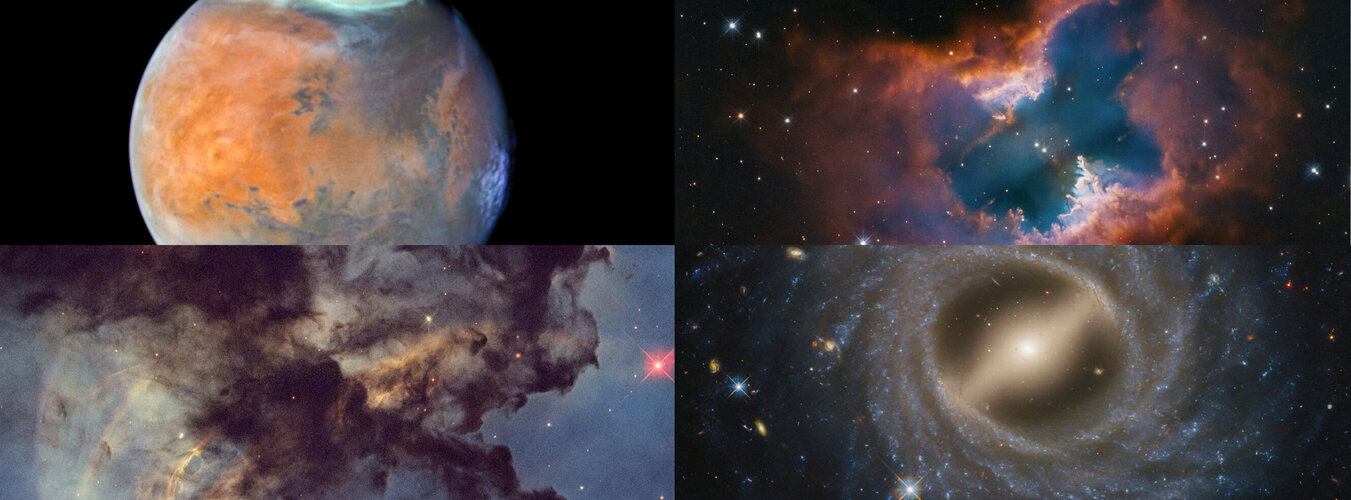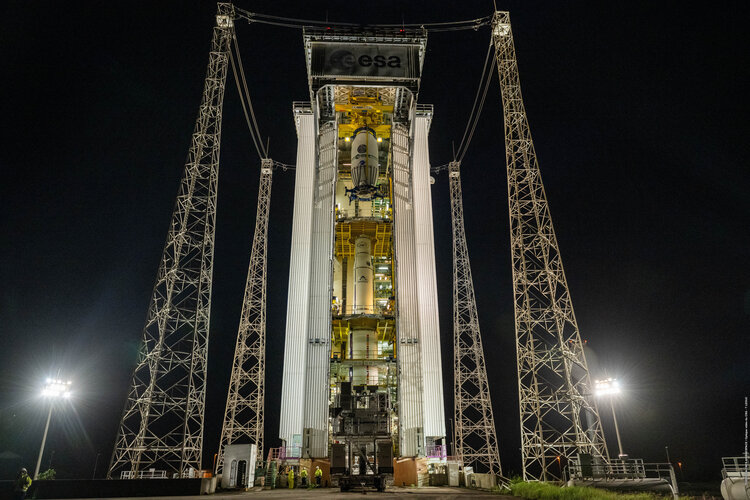
Copernical Team
Next generation scientists set sail to harness space for oceans

A new wave of ocean scientists has embarked on an extraordinary six-week voyage aboard a majestic tall ship that set sail today from Norway bound for southern France. But this is no ordinary journey.
Thanks to this ESA Advanced Ocean Training Course, these upcoming researchers will be taking a deep dive into ocean science, empowering them with skills to harness satellite data for research, innovation and sustainable development – and preparing them to become tomorrow’s leaders and ambassadors for ocean science.
Lifting the canopy on Earth’s forests
 Video:
00:02:22
Video:
00:02:22
ESA’s state-of-the-art Biomass mission has been designed to shed new light on the health and dynamics of the world’s forests, revealing how they are changing over time and, critically, enhancing our understanding of their role in the global carbon cycle. It is the first satellite to carry a fully polarimetric P-band synthetic aperture radar for interferometric imaging. Thanks to the long wavelength of P-band, around 70 cm, the radar signal can slice through the forest canopy and whole forest layer to measure the ‘biomass’, meaning the woody trunks, branches and stems, which is where trees store most of their
Hubble celebrates 35th year in orbit

In celebration of the NASA/ESA Hubble Space Telescope’s 35 years in Earth orbit, an assortment of images that were recently taken by Hubble has been released today. This stretches from the planet Mars to images of stellar birth and death, and a magnificent neighbouring galaxy. After over three decades of scrutinising our Universe, Hubble remains a household word as the most well-recognised telescope in scientific history.
ESA and IBM collaborate on TerraMind

The first version of TerraMind, a powerful next-generation AI model designed to help us better understand and protect our planet, was released today.
Biomass on the launch pad
 Image:
ESA’s Biomass satellite, encapsulated within a Vega-C rocket fairing, has been rolled out to the launch pad at Europe’s Spaceport in French Guiana ahead of liftoff, planned for 29 April at 11:15 CEST.
Image:
ESA’s Biomass satellite, encapsulated within a Vega-C rocket fairing, has been rolled out to the launch pad at Europe’s Spaceport in French Guiana ahead of liftoff, planned for 29 April at 11:15 CEST. NASA Notes Key Milestone in Blue Origin's Orbital Reef Development
 A significant step forward has been achieved in the development of Blue Origin's Orbital Reef, a NASA-backed commercial space station concept, as the project recently passed an important human-in-the-loop testing phase. This test supports NASA's broader goal of advancing commercially operated destinations in low Earth orbit.
The human-in-the-loop tests involved individuals or small teams c
A significant step forward has been achieved in the development of Blue Origin's Orbital Reef, a NASA-backed commercial space station concept, as the project recently passed an important human-in-the-loop testing phase. This test supports NASA's broader goal of advancing commercially operated destinations in low Earth orbit.
The human-in-the-loop tests involved individuals or small teams c China prepares next crewed flight to Tiangong station
 Preparations are nearly complete for the launch of China's upcoming crewed spaceflight, Shenzhou XX, which will ferry three astronauts to the Tiangong space station. The China Manned Space Agency confirmed that both the spacecraft and its Long March 2F rocket were rolled out to the launch tower at the Jiuquan Satellite Launch Center in the Gobi Desert on Wednesday night.
The agency reporte
Preparations are nearly complete for the launch of China's upcoming crewed spaceflight, Shenzhou XX, which will ferry three astronauts to the Tiangong space station. The China Manned Space Agency confirmed that both the spacecraft and its Long March 2F rocket were rolled out to the launch tower at the Jiuquan Satellite Launch Center in the Gobi Desert on Wednesday night.
The agency reporte SpaceX launches Bandwagon-3 mission, European re-entry capsule
 SpaceX launched its Bandwagon-3 mission into orbit Monday night from Cape Canaveral Space Force Station in Florida, with more satellites on board and a re-entry capsule that will become a first for Europe.
The Bandwagon-3 mission, atop a Falcon 9 rocket, lifted off at 8:48 p.m. EDT, from Space Launch Complex 40.
"Liftoff!" SpaceX wrote in a post on X one minute after the launch.
SpaceX launched its Bandwagon-3 mission into orbit Monday night from Cape Canaveral Space Force Station in Florida, with more satellites on board and a re-entry capsule that will become a first for Europe.
The Bandwagon-3 mission, atop a Falcon 9 rocket, lifted off at 8:48 p.m. EDT, from Space Launch Complex 40.
"Liftoff!" SpaceX wrote in a post on X one minute after the launch. Cosmic radio tuning may reveal dark matter within 15 years
 Researchers from King's College London, Harvard University, and UC Berkeley have introduced a new approach to dark matter detection that they believe could yield results within 15 years. The proposed method involves a device they liken to a "cosmic car radio," capable of detecting hypothetical particles known as axions, widely considered among the most promising dark matter candidates.
Dar
Researchers from King's College London, Harvard University, and UC Berkeley have introduced a new approach to dark matter detection that they believe could yield results within 15 years. The proposed method involves a device they liken to a "cosmic car radio," capable of detecting hypothetical particles known as axions, widely considered among the most promising dark matter candidates.
Dar The most ancient Milky Way-like galaxy yet observed
 An international research collaboration led by the University of Geneva (UNIGE) has identified the most remote spiral galaxy candidate ever recorded. Existing just one billion years after the Big Bang, this immense galactic system already displays a well-developed structure including a central bulge of aged stars, an expansive star-forming disk, and pronounced spiral arms. The findings, based on
An international research collaboration led by the University of Geneva (UNIGE) has identified the most remote spiral galaxy candidate ever recorded. Existing just one billion years after the Big Bang, this immense galactic system already displays a well-developed structure including a central bulge of aged stars, an expansive star-forming disk, and pronounced spiral arms. The findings, based on 
